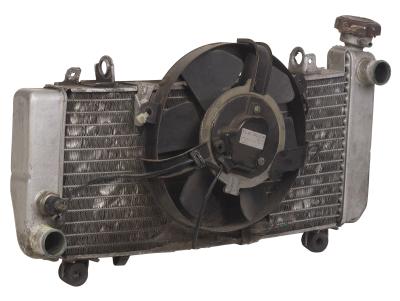
A malfunctioning viscous fan's blades will revolve more than five times when you spin them by hand. If you notice the fan spins without encountering any resistance, the fan must be replaced. However, some viscous fans might not exhibit this behavior and still need to be replaced. If you want to be absolutely sure your fan is in working condition, you need to perform an extra test.
Drill one 1/8-inch diameter hole in the top center of your viscous fan shroud.
Insert the thermometer inside the shroud through the hole you just drilled. Be careful to have enough space between your thermometer and the fan blades.
Connect the tachometer and the engine ignition timing light. You will use the light as a strobe light.
Place a sheet of plastic or any other material in front of the radiator to block the air flow. Secure it with tape. Ensure the air flow is completely blocked. Turn off the air conditioning unit.
Start the engine and rev it up to 2,400 rpm. Keep this rpm for about eight to 10 minutes. The air temperature on the dial thermometer will go up to at least 190 degrees Fahrenheit. The viscous fan must engage at between 165 degrees Fahrenheit and 180 degrees Fahrenheit. You should hear an increase in fan flow noise, like a roaring. Notice the timing light will also indicate that the fan speed is increasing.
When the thermometer reaches 190 degrees Fahrenheit, remove the sheet. The temperature will start to drop and the viscous fan must disengage at between 175 degrees Fahrenheit and 135 degrees Fahrenheit. You will immediately notice a decrease in fan air flow noise. If it does not disengage, it will need to be repaired or replaced.
Replace the viscous fan if it does not engage and disengage at between the recommended temperatures.